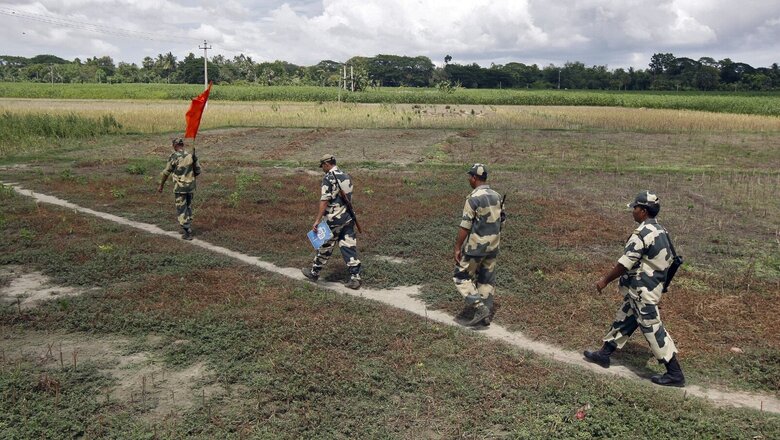
views
The fencing project at India-Bangladesh border continues to drag on with frequent objections from Dhaka stalling progress, especially at points where fencing has to be done within 150 yards of the international border. Despite multiple rounds of talks, visits and changes in the approved design after consultation between both sides, it has been decided to again visit the areas and introduce further changes in the design.
According to sources, the issue was raised during Bangladesh Prime Minister Sheikh Hasina’s recent visit to India, but officials said they had very little hope of an immediate resolution. The Border Security Force (BSF) has put forth a detailed report with the current status of the fencing work, hoping it would help speed up the pace.
Around 75% of the fencing work at India-Bangladesh border has been completed since it was started in 2017, but patches at key locations remain where no work has been done, defeating the purpose of the fencing project. The points where fencing is to be done within 150 yards of the border falls along West Bengal, Assam, Tripura and Meghalaya.
As per the Indira-Mujib pact of 1972, no permanent structure can be built within 150 yards of the border. These locations must be free from the zero line.
A top-level BSF official explained to News18 that the objections raised by its Bangladesh counterpart, the Border Guard Bangladesh, defeat the purpose of fencing. “The BGB claims that there would not be any cemented base or anti-cut fencing. Bangladesh insists on single-line fencing, which has a long gap between two wires, rendering fencing useless. Such fencing is easy to cut and likely to create more problems for the BSF. There have been multiple visits, designs approved after joint inspection. Still work has been halted repeatedly,” the official said.
The border is susceptible to human trafficking, drugs smuggling, supply of fake currencies and cattle smuggling among other issues. Instances have been reported wherein smugglers have attacked BSF jawans who tried to stop them.
Another BSF official told News18 it has been decided that locations in question will be visited again. “There will be no fencing at zero line. In a recent DG-level meeting, it has been decided that officials will visit again. We will introduce changes as per the suggestions and work will be resumed to complete the fencing.”
Meanwhile, in areas where fencing has to be done on the Indian side, land acquisition has emerged as a big problem. This is particularly the case in areas where fencing is not possible due to the terrain and land is required for it.
The Indian government has previously said that the work is yet to be completed because of various factors. “The fencing work could not be completed due to difficult terrain, short working season, land acquisition problems, public protests, objections by Border Guard Bangladesh and recently the Covid-19 situation. The government regularly monitors the progress of work along the Indo-Bangladesh border to ensure its completion,” the Ministry of Home Affairs had said.
Earlier, Minister of State for Home Nityanand Rai told Parliament that 3,141 km of the total 4,096.7 km India-Bangladesh border had been covered by fencing till last year.
The government has adopted a multi-pronged approach to check illegal trade of cattle along the India-Bangladesh border, which includes round-the-clock surveillance and patrolling and establishment of observation post; increase in the number of BSF personnel; construction of border fencing and floodlighting; use of watercraft or boats and floating Border Out Posts (BOP) for domination of riverine area; deployment of advance technological equipment like hand held thermal imager, night vision device, twin telescope, unmanned aerial vehicles, upgradation of intelligence setup and enhanced coordination with the state governments or concerned intelligence agencies.
Read all the Latest News India and Breaking News here




















Comments
0 comment